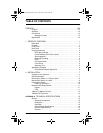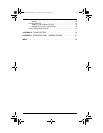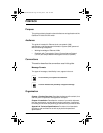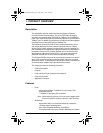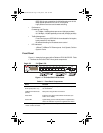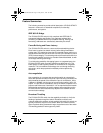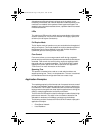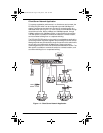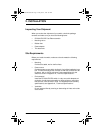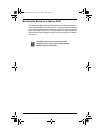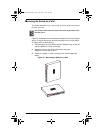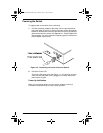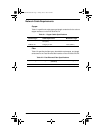
4 Product Overview ELS100-8TXUF2
Feature Summaries
The following summaries provide a brief description of ELS100-8TXUF2
features in areas such as standards compliance, functionality,
performance, and options.
IEEE 802.1D Bridge
The ELS100-8TXUF2 switch is fully compliant with IEEE 802.1D
transparent bridging specifications. An aggregate address table
containing 1K address entries is provided for learning, filtering, and
forwarding. Addresses are automatically learned by the switch.
Frame Buffering and Frame Latency
The ELS100-8TXUF2 switch is a store-and-forward switching device.
Each frame is copied into switch memory before being forwarded to
another port. This method ensures that all forwarded frames conform to a
standard Ethernet frame size and have a correct cyclic redundancy check
(CRC) for data integrity. This switching method prevents bad frames from
traversing the network and using up valuable network bandwidth, as with
cut-through switching technology.
To minimize the possibility of dropping frames on congested ports, the
ELS100-8TXUF2 switch provides 128 KB frame buffer per port. This
buffer space is used to queue packets for transmission on congested
networks. This is an additional advantage over cut-through switching
technology, which drops packets immediately when experiencing
collisions.
Auto-negotiation
Auto-negotiation is a process that permits the switch to automatically
select the operational modes of its ports. Upon first being connected, the
switch detects the speed of the network the port is connected to, either
10Mbps or 100Mbps, and the type of communication setting, half or full
duplex. The port is then automatically set by the switch to operate in the
proper mode without user intervention. It is not required that the network
device being connected to the switch supports auto-negotiation as the
ELS100-8TXUF2 switch automatically adjusts to the network device’s
communication settings.
Broadcast Throttling
The ELS100-8TXUF2 switch has the capability to throttle (or limit) the
flooding of packets through the switch. Broadcast, multicast, and
unknown destination address unicast packets received by the switch are
typically flooded to all ports on the switch. When the number of these
types of packets being forwarded is large, the performance of the switch
in forwarding packets of other types may suffer.
ELS100-8TXUF2.book Page 4 Friday, June 4, 1999 4:01 PM




